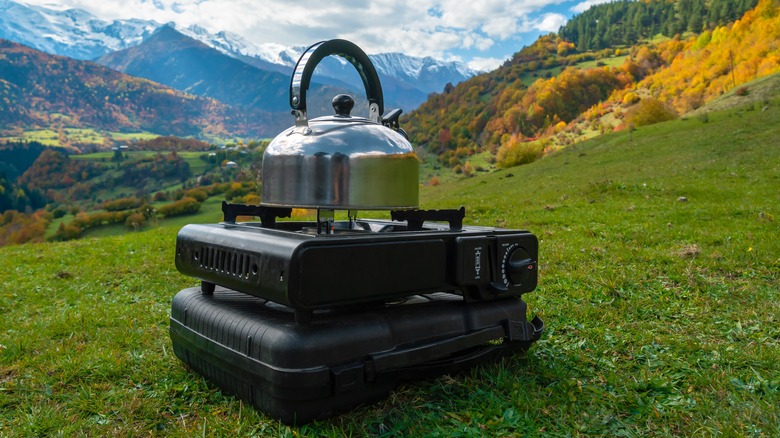How To Adjust Your Water Boiling Process For High Altitudes
Boiling water may be one of the easiest things you can do when cooking, but even this simple step has a few guidelines that should be followed for optimal results. For example, it pays to boil water with a lid on, as this trick can increase the temperature of the water inside and therefore boil it more quickly. You'll also want to take into consideration what you're boiling the water for. If you're in the wilderness and need to make safe drinking water, for instance, you should bring the water to a specific type of boil and leave it there for a certain amount of time.
But let's say you're not braving the elements — you're just trying to make some pasta in your kitchen. A wider, shallower pot will create more surface area and bring your water to a boil faster, as will a thinner pot, Always Order Dessert explains. There's also no need to fill the entire pot with water, which could take forever to boil — if you're making one pound of pasta, you only need four quarts of water, according to Eataly. And if you live in a place with a higher altitude, you'll want to adjust your boiling process according to your elevation.
Water boils at a lower temperature in high altitudes
The standard boiling point of water is widely known to be 212 degrees Fahrenheit, according to Thought Co. But did you know that temperature actually depends on your elevation? According to The Spruce Eats, water boils at 212 degrees when you're at sea level — so if you live in San Diego, for example, this applies to you. But what about if you reside in Alma, Colorado, which is elevated 10,361 feet above sea level, or Flagstaff, Arizona, which is 6,910 feet above sea level? These are some of the highest altitude cities in the U.S., according to Tuko, and your boiling process will most likely be different this high up.
When you venture to altitudes above 3,000 feet, the U.S. Department of Agriculture shares, the pressure in the atmosphere decreases, and water can boil at a lower temperature. This may sound great — if you don't need your water to reach 212 degrees, won't you be able to boil your food faster? In actuality, you should increase your cooking time, because the lower temperature will cause your food to cook more slowly.
According to The Spruce Eats, the boiling point varies by altitude — if you're at 2,000 feet, the right temperature is 208 degrees, and if you're at 8,000 feet, it's 197 degrees. So if you do live in one of these elevated cities, make sure to adjust your boiling process accordingly.

